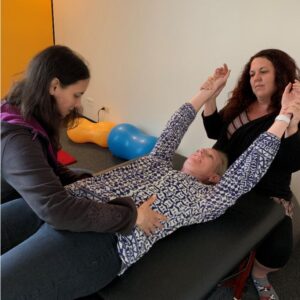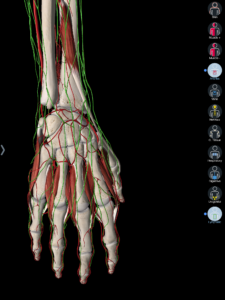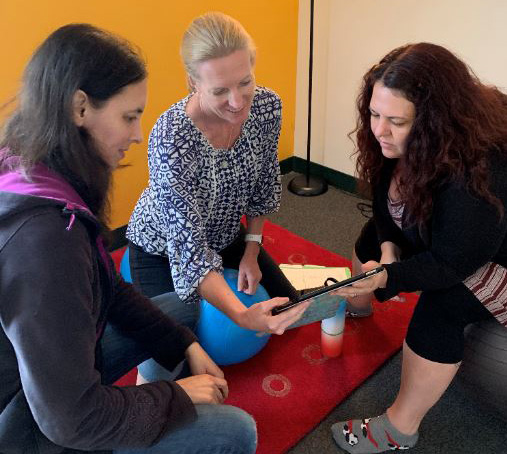What is Deliberate Practice?
Deliberate practice is something we embrace as Bridging® Technique Specialists. Finding ways to help relieve your pain faster and increase function more completely is a passion for us.
Breaking down the nuances of your pains or developmental challenges to better understand the causes, effects, and movement relationships is something we love to do. Every two weeks we have time set aside to specifically dig into movement concepts.
In her book, Grit, Angela Ducksworth adds the concept of deliberate practice to the process of how we learn and excel. Deliberate practice occurs with specific intent and with specific feedback.
As adults, we recognize that both quantity of time and specificity of intent are integral to not just learning, but mastering skills. Examples abound — Language study really requires immersion and time for fluency. Driving requires years before we have the habitual instinct of all the ways to avoid other drivers’ recklessness. (At least teens have to complete 100 hours!) Pilots complete thousands of hours of cumulative flight time with additional hours annually for specific training.
This same habituation is exactly what happens with each step of childhood development. Hours and hours of practice. The deliberate practice includes the coaching and exuberant smiles from parents. The variations of different terrain and situations adds to the resilience of skills. It is also why we make specific time to practice.
Continuous Learning
A key part of our commitment to helping you feel and function better is curiosity and continuous learning. This takes several forms comprised of our weekly team calls, a biweekly team project time, and a quarterly Bridging community learning time.
- The weekly team calls include sharing recently published research relevant to our clients. (This week was an article about microbiota in newborns born via C-section.)
- The team project time is where we take time to get curious, hypothesize, and experiment. What are some consistent characteristics we have seen with clients? Are there any outliers — complex or fast-responding? Common traits within the groups? What insight does published research add? How are the involved structures supposed to develop in the fetal period and infancy? What are the structural details? (The current theme of exploration is paws–hands and feet.)
- We test the theories on ourselves and review the changes. In the time between project time sessions we integrate this new knowledge into work with clients when relevant. This becomes new data to add to the discussion when we reconvene. As a consistent set of rules around the relationships emerges, the knowledge is codified to share with other Specialists.
Quarterly Bridging Specialist gatherings are where the latest learnings are shared to the larger Bridging Specialist community.
What we’ve been exploring lately — Hands
 Leslie and Joanna explore how Erika’s hand relationships enable changes in her shoulders and core.
Leslie and Joanna explore how Erika’s hand relationships enable changes in her shoulders and core.
Increasing the intricacy of the segmental movement in the fingers, the palm, and the wrist made a difference to the flexibility of Erika’s shoulders and tightness at her neck — a persistent trouble spot.
What do we check for and observe?
In the most fundamental aspect, the right and left hands need to match in every quality imaginable — range of motion, strength, flexibility, lightness, speed, etc. As we progress into more complex relationships we check to make sure detailed characteristics of the right and left sides of a hand itself match.
Drilling down another layer is where we check how each individual segment of the fingers connect and match up to the next, and various finger-based coordination tasks like tapping and sliding.
The movement flow from the finger tips cascades sequentially all to way up to the neck and core. Indeed, enabling more complex interactions at the hand allows for more complex interactions at the neck and shoulder.
Bottom line — your muscles feel more at ease and you feel better!
How does this relate to you?
Hands bothering you, have trouble typing or writing, or maybe persistent neck stiffness?
Hard to write neatly or easily, use scissors, or master the coordination for a video game?
These are all things we find related to lack of differentiation in the hands.
These are all functional movements which change fairly quickly.
Sharing some of our background research
Hand function related to brain function
Your hand function changes as we use the Bridging technique — sometimes in just minutes! It really is amazing is to see the accompanying changes in writing, communication, and perception. Here are two research studies which show a link between hand and brain function.
- People are losing the brain benefits of writing by hand as the practice becomes less common. Writing by hand may also improve a person’s memory for new information. A 2017 study in the journal Frontiers in Psychology found that brain regions associated with learning are more active when people completed a task by hand, as opposed to on a keyboard. Read more.
- Researcher unlocking relationship between early math ability, fingers. Ask toddlers how old they are, and they are likely to hold up the corresponding number of fingers and say, “this many.” Read more.
A structural resource — 3D Anatomy
 Even taking a fresh look at all the little details in the area we are studying can trigger new thoughts. We love the Anatomy 3D Atlas app. We can add or take away layers of various types of tissues.
Even taking a fresh look at all the little details in the area we are studying can trigger new thoughts. We love the Anatomy 3D Atlas app. We can add or take away layers of various types of tissues.
Here is an image of the hand and forearm showing the arteries (red), lymphatic vessels (green), and one layer of muscles. Each of these systems can restrict specific aspects of movement.
By exploring the Bridging movements in the context of each anatomical layer we can construct hypotheses related to various client situations. Feel free to ask us to show the layers of relationships we are working on.
How do I get started?
You can call 847-390-8348 or schedule online for a session.
To find out how we can specifically help you, or your loved one check out our website. Past newsletter topics are now posted on the BLOG page.
Find related explanations in the FB videos where I share a more detailed description of common challenges and how we use Bridging to help. (You do not need a FB account to watch)

